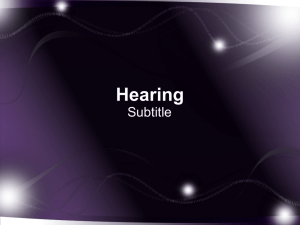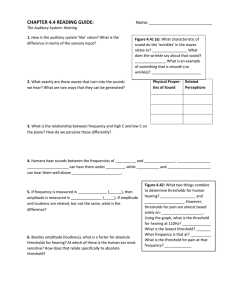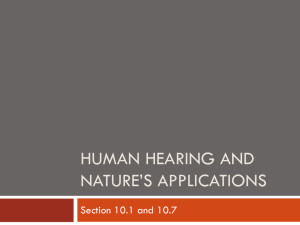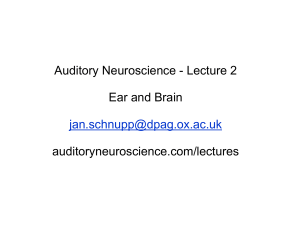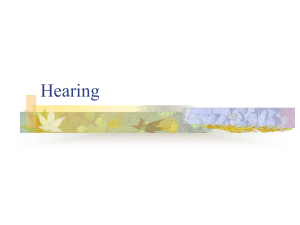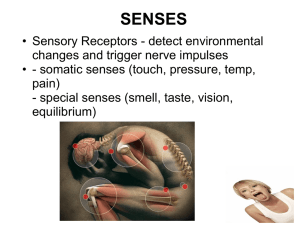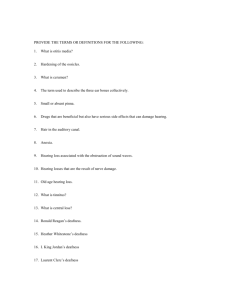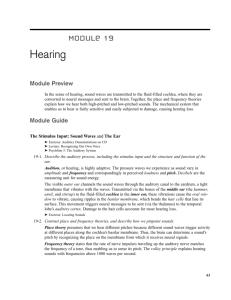3_Hearing
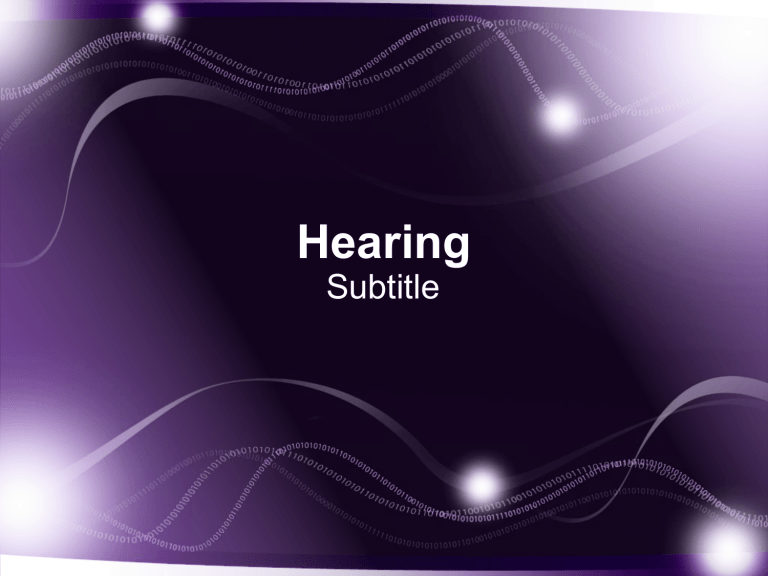
Hearing
Subtitle
The Physics of Sound
Frequency : The
Amplitude : number of cycles a sound wave completes the Strength in a given period of time of a wave
Anatomy of the Ear
From Sound Wave to Perception
1. Pinna Tympanic Membrane (eardrum) bones of inner ear (hammer, anvil, stirrup) COCHLEA (primary hearing organ)
2. Cochlea is filled w/ fluid, which further transmits vibrations to thin membrane-
Basilar Membrane
3. BM = Transduction; tiny hairs on BM tickle the sensory nerves
4. Neural message is sent to Temporal Lobe
How Sound Waves Become
Auditory Sensations
Tympanic membrane –
The eardrum
Copyright © Allyn and Bacon 2006
How Sound Waves Become
Auditory Sensations
Cochlea –
Where sound waves are transduced
Copyright © Allyn and Bacon 2006
How Sound Waves Become
Auditory Sensations
Auditory nerve –
Neural pathway connecting the ear and the brain
Copyright © Allyn and Bacon 2006
3 Psychological Sensations of
Sound
1.Pitch
- the way we sense frequency
2.Loudness
- the way we sense amplitude
3.Timbre
- the way we sense the complex mix of tone
Copyright © Allyn and Bacon 2006
2 Hearing Theories
1. Place Theory : different places on the BM are responsible for different pitches- explains high pitches
2. Frequency Theory : BM fires off neural messages at different ratesrate of firing accounts for differences in neural transmissions, which result in us hearing low frequencies
Conduction Deafness
• An inability to hear resulting from damage to structures of the middle or inner ear
• Conductive hearing loss is often only mild and is never worse than a moderate impairment.
• Generally, with pure conductive hearing loss, the quality of hearing (speech discrimination) is good , as long as the sound is amplified loud enough to be easily heard.
• Possible Causes
• Ear wax build up
• Fluid inside the inner ear, like from an inner ear infection.
• If the bones of the ear get a buildup of calcium
Sensorineural Deafness … or
Nerve Deafness
• An inability to hear, linked to a deficit in the body’s ability to transmit impulses from the cochlea to the brain, usually involving the auditory nerve or higher auditory processing centers
• It can be mild, moderate, severe, or profound, to the point of total deafness .
• Possible Causes
• Long-term exposure to environmental noise
• Genetic
• Disease or illness
• Medications
• Physical trauma
Pre-Lingual Deafness
• These are people that are born deaf
